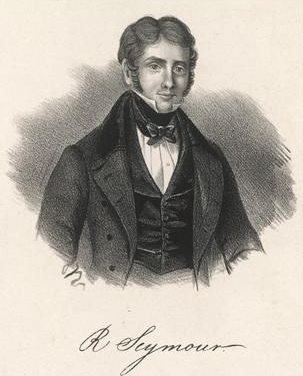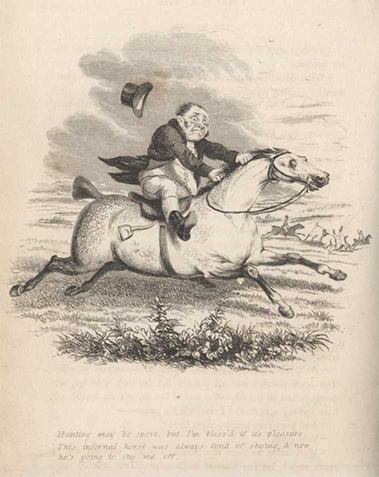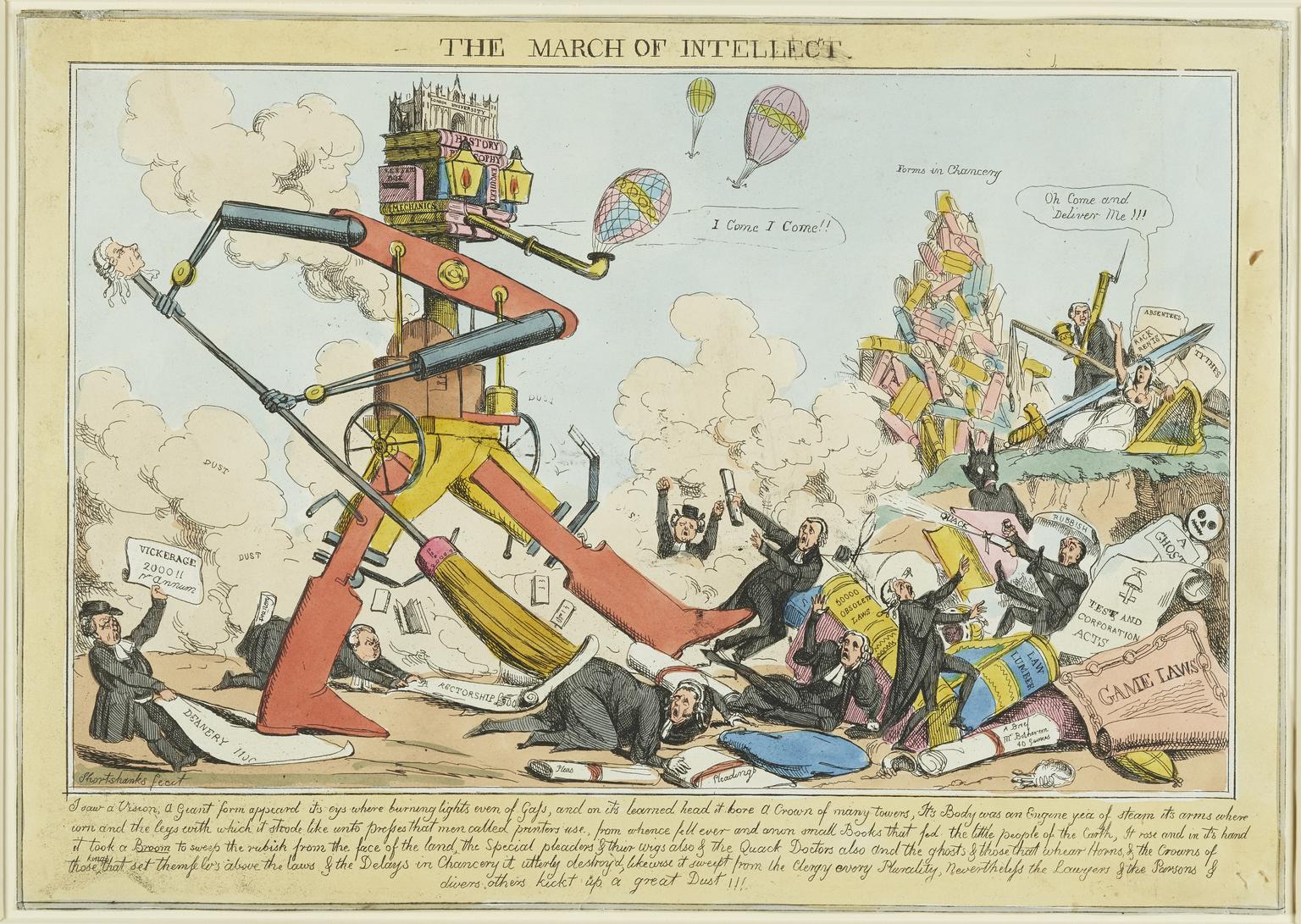Robert Seymour (1798-1836)

Like Dickens, Robert Seymour endured an impoverished childhood. He exhibited his first painting at the Royal Academy when he was twenty-two years old. Despite the rejection of his subsequent submissions, he continued to paint numerous portraits and began illustrating books. In 1827, he married, his mother died, and his publishers went bankrupt while owing him money. Seymour learned to etch on steel plates (as opposed to copper) and began to specialize in caricature and humorous drawings.
He worked for Figaro in London but was treated shabbily by the publisher who at one point neglected to pay Seymour and instituted a campaign libeling Seymour, questioning his sanity and calling him "a perfect dolt": Despite the difficulties, Seymour's work for the magazine helped to establish his status as a preeminent illustrator. He settled in the London suburb of lslington, where he observed working-class Londoners coming to the country to play at being sportsmen. Seymour used the comic efforts of these weekend sportsmen in his Sketches by Seymour to great popular effect.


Seymour planned a series of humorous images of a Cockney sporting club, to be published in monthly parts along with amusing paragraphs. The publishers proposed the young writer Charles Dickens, who felt that the established artist should provide illustrations based on text written by himself. While retaining the idea of a club, the resulting Pickwick Papers contained little material relating to Seymour's original concept. Dickens was openly critical of Seymour's work, which was humiliating for the artist. Several days after Dickens requested the redesign of an illustration, Seymour shot himself outside his garden studio. Seymour's suicide was likely triggered by a combination of financial and personal troubles, although some have blamed Dickens for precipitating his death.
Illustrations




Back
